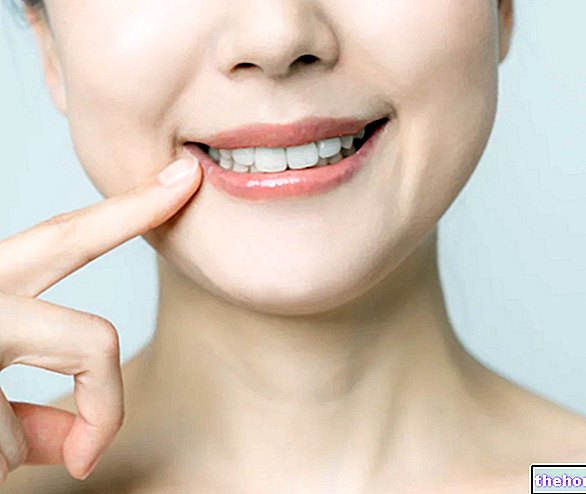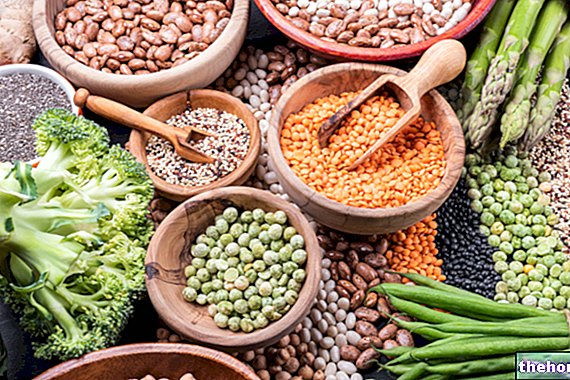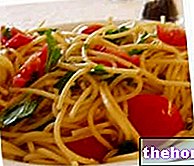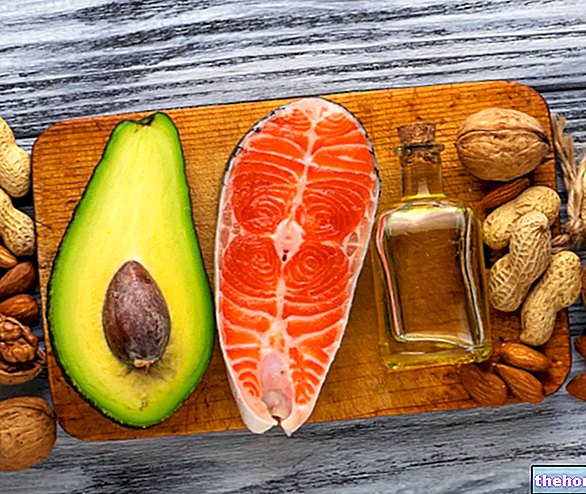
These molecules contribute above all to preventing the oxidation reactions of polyunsaturated lipids, thus acting as biological antioxidants, in a "metabolically" similar and / or complementary way to vitamin C (ascorbic acid, water-soluble).
The action of tocopherol is not limited to the metabolism of living organisms, but also extends to the reactions of substrates such as, for example, foods, supplements, drugs and cosmetics. Tocopherols added to foods in fact improve storage stability and processing of products containing fats - for example oils - and are therefore added as an antioxidant additive.
Maybe you were looking for: Foods with vitamin E tenuous, by passive diffusion.
As with all fat-soluble vitamins, also the absorption of tocopherol requires an adequate emulsion and micellar solubilization. The esterified forms are probably hydrolyzed by an esterase of the duodenal mucosa and the alcoholic form thus obtained is absorbed.
Absorption of tocopherol can therefore occur only in the presence of bile salts and dietary fats.
The absorption efficiency is low and variable (20 ÷ 60%) and decreases as the intake increases - reason why a constant and moderate dietary intake is more effective than super-doses by means of food supplements .
Once absorbed, the tocopherols pass into the lymphatic circulation associated with chylomicrons (45%); then they are concentrated in the remnants chylomicrons which transfer it to the liver (main storage organ). Inside the hepatocytes they are incorporated into the nascent VLDL (11%), from which it then passes to the LDL (65%) and HDL (24%).
Transport of tocopherols by lipoproteins has two important implications:
- The polyunsaturated fatty acids are protected from the attack of free radicals;
- The plasma concentration of tocopherols not only depends on the dietary intake, but also varies according to the concentration of lipoproteins.
However, tocopherol is also present in erythrocytes (red blood cells) where it is concentrated especially in the membranes (15 ÷ 25% of the plasma concentration).
Lipoproteins carry out the transport of tocopherols to different tissues, including, as we have said, the liver, but also lungs, heart, muscles and adipose tissue.
The mechanisms of vitamin transfer from lipoproteins to tissues are thought to be the same as those used for the passage of other lipophilic compounds.
The only tissue that continuously takes in vitamins E from the blood is fat. It is hypothesized that, in the obese, the adipose tissue is such as to recall the tocopherols from the other tissues.
During intense physical exercise there is a significant increase in circulating levels of tocopherol (10 ÷ 20%), probably due to the mobilization of fatty acids during lipolysis for energy purposes.
Once in cells, tocopherols are concentrated especially in structures that contain membrane phospholipids, such as mitochondria, microsomes and plasma membranes.
oxidative agents involved in aging, in the pathogenesis and complications of diabetes (cataracts and cardiovascular problems).
Tocopherol and coronary heart disease
Tocopherol can exert protective effects against coronary heart disease. According to the antioxidant hypothesis, the main mechanism by which tocopherol carries out this protective action would be the inhibition of LDL oxidation.
Tocopherol and cancer
Vitamers E can protect against carcinogenesis and tumor growth, through antioxidant properties and / or immunomodulatory functions:
- Elimination of mutagens, superoxide radicals and / or nitrogen dioxide;
- Inhibition of peroxidation of DNA and proteins;
- Induction of apoptosis by inhibiting DNA synthesis in cancer cells.
Antioxidant tocopherol in food
Tocopherols and tocotrienols can be added to foods for the stabilization of polyunsaturated fatty acids.
The addition of tocopherols in the form of blends is an effective way to improve the oxidative stability of oils, because in blends they protect and regenerate each other.
Often tocopherols and tocotrienols are added mixed with other compounds such as vitamin C and / or chelating agents that enhance the effect of tocopherols, such as various natural antioxidants (such as certain polyphenols).
For further information: Vitamin E in cosmetics with anti-aging action as an additive - as well as for the reserves present in the organism.Ultimately, vitamin E deficiency in healthy individuals appears to be limited to malnourished people; for example third and fourth world subjects, people suffering from eating disorders (DCA) - in particular from anorexia nervosa (AN) - bodybuilders who follow low-fat diets (fat-free, as far as possible), or who use drugs or fat chelating supplements - chitosan, lecithins, soluble fiber etc.
It is different if we take into consideration any pathologies or uncomfortable conditions of organic etiology, therefore anatomical, functional or metabolic. More often, however, in severe cases malnutrition is not specific to vitamin E but generalized, or due to the coexistence of other factors: lack of biliary secretion, intestinal resection, pancreatic insufficiency, defects in the hepatic tocopherol-binding protein, etc.
Primary and spontaneous deficiency was observed only in premature infants, due to poor tissue reserves resulting from the modest trans-placental passage of tocopherol. In these subjects, the deficiency can also be a consequence of the use of artificial milk rich in PUFA (polyunsaturated fatty acids).




























